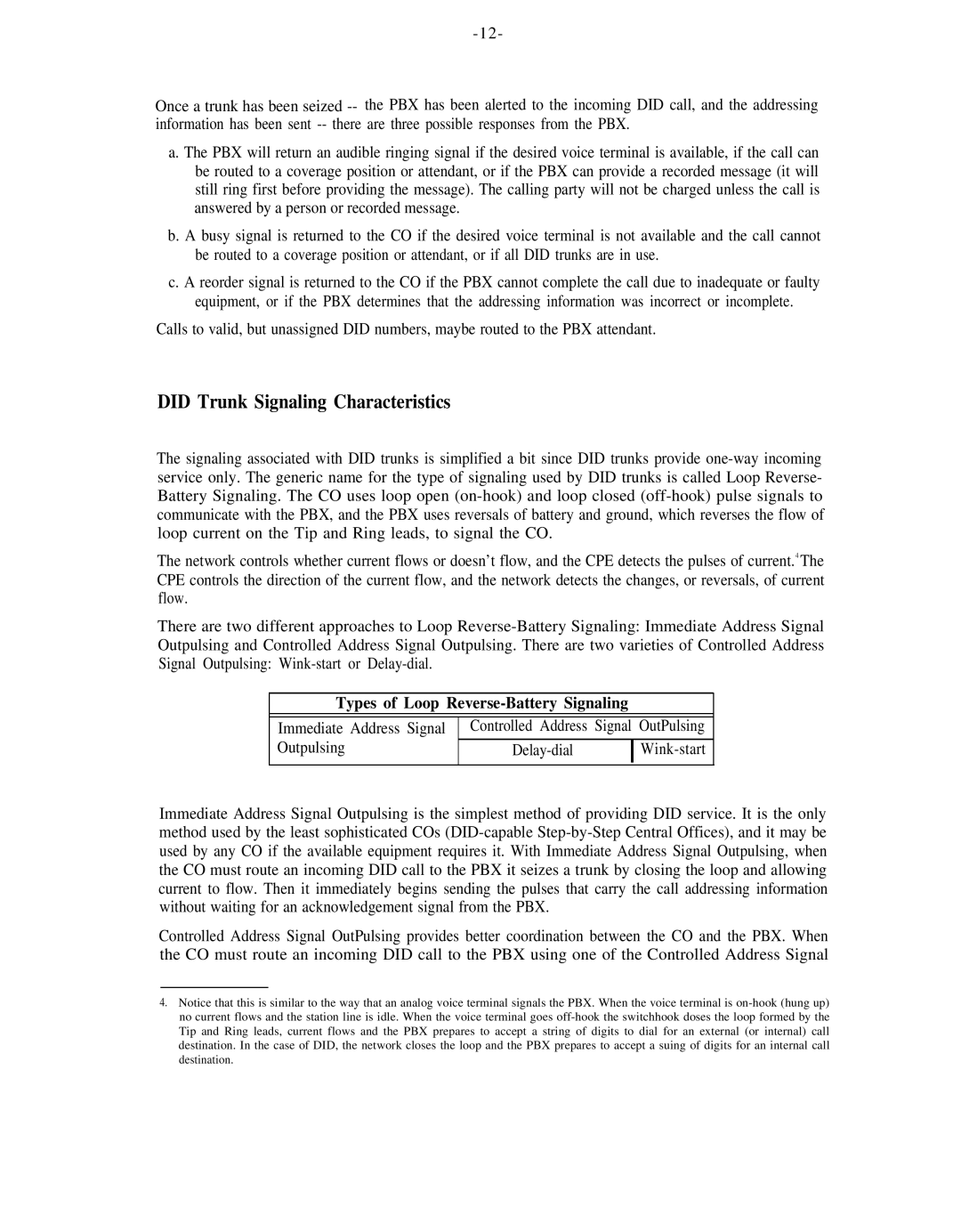
Once a trunk has been seized
a. The PBX will return an audible ringing signal if the desired voice terminal is available, if the call can be routed to a coverage position or attendant, or if the PBX can provide a recorded message (it will still ring first before providing the message). The calling party will not be charged unless the call is answered by a person or recorded message.
b. A busy signal is returned to the CO if the desired voice terminal is not available and the call cannot be routed to a coverage position or attendant, or if all DID trunks are in use.
c. A reorder signal is returned to the CO if the PBX cannot complete the call due to inadequate or faulty
equipment, or if the PBX determines that the addressing information was incorrect or incomplete.
Calls to valid, but unassigned DID numbers, maybe routed to the PBX attendant.
DID Trunk Signaling Characteristics
The signaling associated with DID trunks is simplified a bit since DID trunks provide
The network controls whether current flows or doesn’t flow, and the CPE detects the pulses of current.4 The CPE controls the direction of the current flow, and the network detects the changes, or reversals, of current flow.
There are two different approaches to Loop
Types of Loop Reverse-Battery Signaling
Immediate Address Signal Outpulsing
Controlled Address Signal OutPulsing
|
|
Immediate Address Signal Outpulsing is the simplest method of providing DID service. It is the only method used by the least sophisticated COs
Controlled Address Signal OutPulsing provides better coordination between the CO and the PBX. When the CO must route an incoming DID call to the PBX using one of the Controlled Address Signal
4.Notice that this is similar to the way that an analog voice terminal signals the PBX. When the voice terminal is
